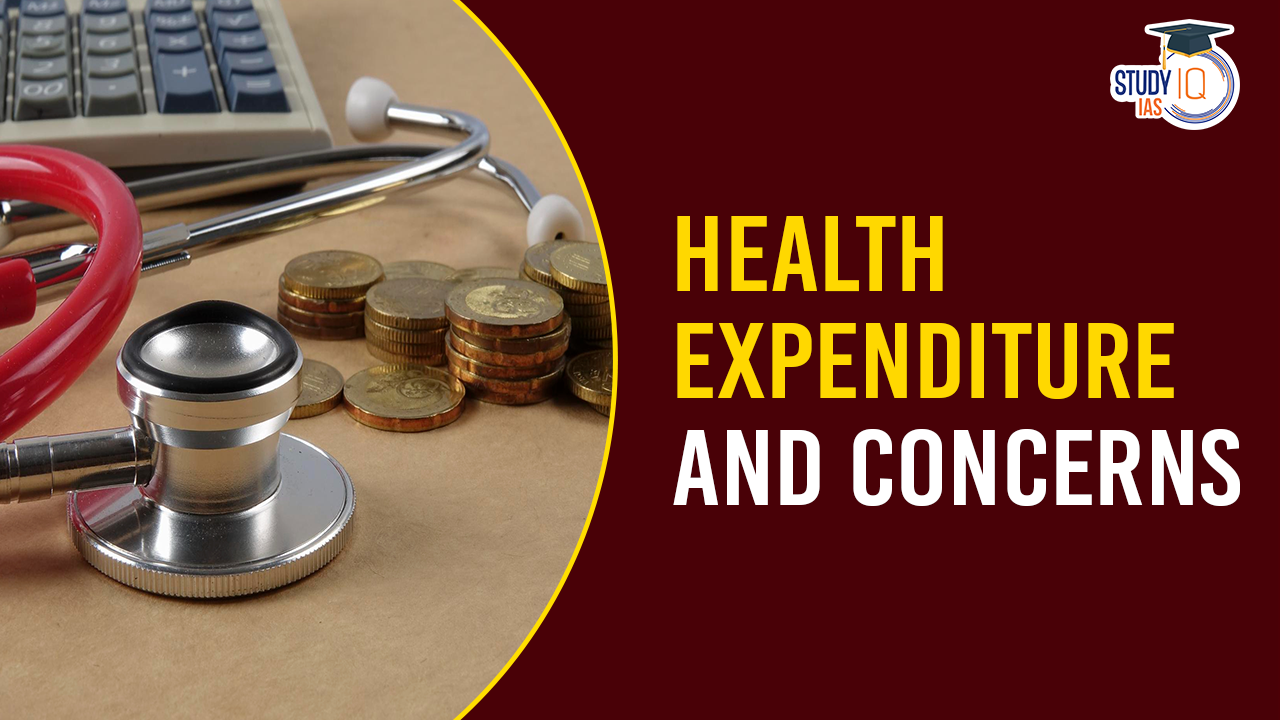Table of Contents
Context: The nation’s commitment to increasing public expenditure on health in recent years is evident from the National Health Accounts (NHA) data, including the provisional estimates for 2020-21 and 2021-22.
What are the Findings of National Health Accounts (NHA)?
Trends in Government Health Expenditure (GHE)
- Increase in GHE: Government health expenditure as a percentage of GDP has seen a significant increase of 63% from 2014-15 to 2021-22, growing from 1.13% of GDP in 2014-15 to 1.84% in 2021-22.
- Per Capita GHE: On a per capita basis, GHE rose from Rs 1,108 in 2014-15 to Rs 3,156 in 2021-22, nearly tripling over the period.
- Expenditure on Government-Financed Insurance: Spending here increased 4.4 times from Rs 4,757 crore in 2013-14 to Rs 20,771 crore in 2021-22, largely driven by investments in the Ayushman Bharat Pradhan Mantri Jan Arogya Yojana (AB PMJAY) and state health assurance/insurance schemes.
- Social Security Expenditure on Health: The share of this expenditure rose from 5.7% in 2014-15 to 9.3% in 2019-20 of the total health expenditure.
Reduction in Out-of-Pocket Expenditure (OOPE)
- Decline in OOPE: OOPE as a share of the total health expenditure decreased from 62.6% in 2014-15 to 39.4% in 2021-22.
- Impact of COVID-19: Despite the challenges posed by the COVID-19 pandemic, the trend of declining OOPE continued during 2020-21 and 2021-22.
Enhancements in Health Services
- Increased Utilisation of Government Facilities: There has been an increase in the use of government facilities for inpatient care and institutional deliveries.
- Free Services: Over 1.69 lakh Ayushman Arogya Mandirs provide free drugs and diagnostics, significantly reducing financial burdens on families. Primary health centres under this initiative offer up to 172 free medicines and 63 diagnostic tests.
- Jan Aushadhi Kendras: These centres sell over 1,900 quality generic medicines and nearly 300 surgical items at low costs, saving consumers Rs 28,000 crore since 2014.
- Price Regulation: Regulatory measures on coronary stents, orthopaedic knee implants, and cancer drugs have saved people approximately Rs 27,000 crore annually.
Broader Economic and Health Implications
- Economic Surveys: Health-related expenditure by the government was reported at 1.6% of GDP in FY 2020-21 and 2.2% in FY 2021-22. This includes spending on crucial social determinants of health like water supply and sanitation.
- Impact of Safe Water and Sanitation: The Jal Jeevan Mission and Swachh Bharat Mission (SBM) Grameen have significantly improved access to safe drinking water and sanitation, contributing to substantial health benefits and preventing deaths.
Infrastructure and Health System Strengthening
- Health Infrastructure Funding: Significant funding has been allocated to health infrastructure under various national schemes, including the creation of new medical colleges and AIIMS, and the development of paediatric and adult ICUs.
- Health Grants: The 15th Finance Commission has allocated Rs 70,000 crore to strengthen the primary health system.
Conclusion
- Increasing government funding for healthcare and decreasing OOPE are positive steps towards achieving universal health coverage.
- Investments are being made to strengthen healthcare infrastructure and primary health systems.
- India’s health system is on track to reform and transform to meet the goals of the National Health Policy (NHP) 2017.


 Utkal Divas 2025: Odisha Foundation Day ...
Utkal Divas 2025: Odisha Foundation Day ...
 List of Military Exercises of India 2024...
List of Military Exercises of India 2024...
 GPS Spoofing and Its Impact in India: A ...
GPS Spoofing and Its Impact in India: A ...





















